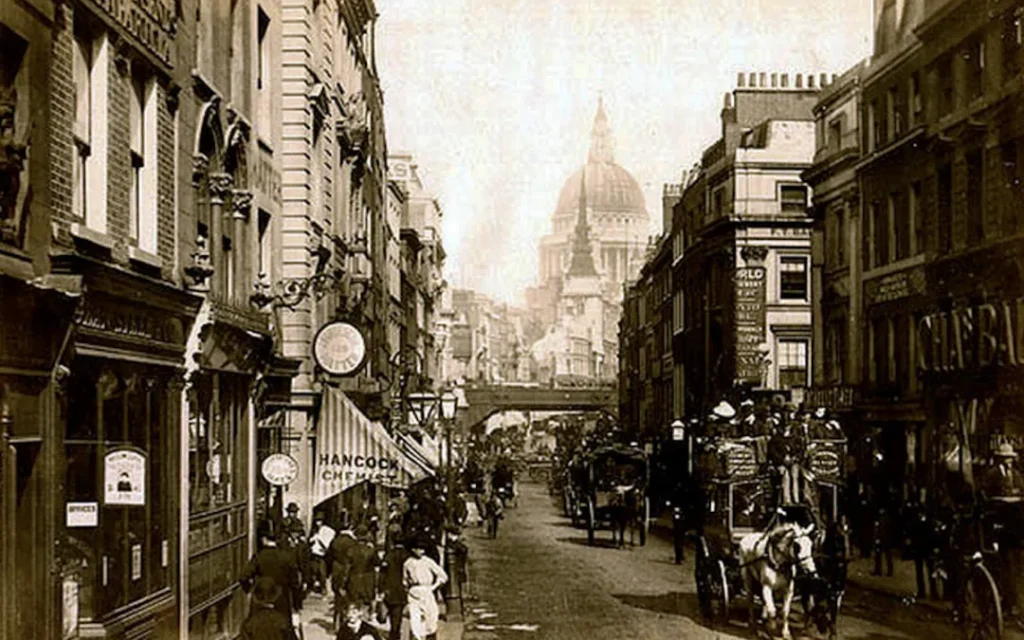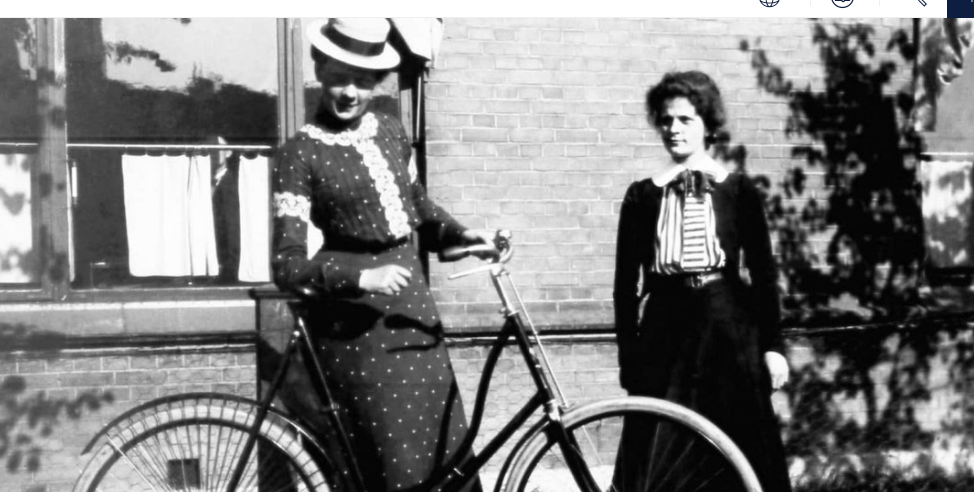
It is hard to believe, sometimes, that the Fleet Street of today was once, even as recently as the late nineteen sixties, the thriving hub of the newspaper industry. Today, walking down the thoroughfare that links Ludgate Hill with the City and the West End– one comes across familiar names and images celebrated in the annals of journalism—El Vinos, the Old Cheshire Cheese — and shapes such as the domineering Art Deco ‘ black Lubyanka’ once home to the Daily Express, and the former Reuters HQ at number 85, as well as name plates that are still speak of twentieth century journalism But compared to 1968 when your teenage Jotter first explored the area, Fleet Street and its side streets are almost unrecognisable.
Various books published during its heyday capture some of the excitement of working in Fleet Street, but one stands out. The Book of Fleet Street, edited by T. Michael Pope in 1931 collects together recollections of some the big hitters who cut their teeth in the Street and who went on to even greater things—men like Hilaire Belloc, Gerald Bullet. D. B. Wyndham Lewis, Robert Lynd, Arthur Machen , J. B. Morton, J. B Priestly, Gerald Barry, Edward Shanks, J.C Squire, Alec Waugh and Henry Williamson —but also gives space to the memories of lesser journalists, such as George Blake ( not the spy) , Christopher Saltmarshe, Edith Shackleton. T. Earle Welby and George Stern. Although the book’s editor, T(homas) Michael Pope ( 1876 – 1930), did not supply his own recollections, this may have been through modesty, as one of the contributors suggests, or more likely because he was ill at the time. Sadly he died before the book came out.
Pope was a lesser figure than any of these, and one with a very different background. Son of a Kennington grocer, he did not attend university and by 1901 was working as a ledger clerk, while earning extra money contributing to such magazines as Academy, The Boys Own Paper ,The John O’London weekly and the Daily Graphic, where he was a leader writer. In this role, his contributions were beginning to impress Gerald ( later Sir Gerald ) Barry, then a schoolboy in Lowestoft, and Pope’s junior by twenty-two years. In his recollection Barry paid tribute to the older man who had made him a journalist.
‘ My whole reading was his and his colleagues; half my thoughts were theirs; even in school hours we were not divided, for the dictation we received was chosen from his leading articles, and I remember he displayed a creditable fondness for long and difficult words…
Before we examine some of the recollections of Fleet Street it might b instructive to compare the memories of yet another hack, the gifted poet and critic Geoffrey Grigson, who when the book came out was working on the London edition of the Yorkshire Post. In his wonderfully funny, often moving, and brilliantly written Crest on the Silver (1950) Grigson cast a baleful eye on Fleet Street and its denizens. While Barry may have been impressed by the older Pope, the young Grigson, fresh out of Oxford, was not enamoured of his senior colleagues on the Post. Some he selected out for particular scorn:
‘ Some would accept any ruling, write anything, condemn or praise anything, knowing to a nicety the prejudices of the editor. One of them, an old man again, well educated, well paid, always in trouble over money and his children, on whose education he had spent almost nothing of his high earnings, appeared to have only one desire left as a journalist: to slip past the subs, the assistant editor, the editor, all of whom he despised, some half-concealed indecency which read a second time would refer beyond cavil to the female organs of sex..’
‘ I began to learn something of the pitiful nastiness and dirtiness of one man towards another. I watched a case rigged against another young journalist to remove him and make a place for an elderly and useless and inoffensive little drunk who was out of luck but had been a colleague once of the intriguer. I watched with surprise machinations against myself—with surprise not because they were against me, but because I had not met, even at a public school, the deliberate planning of evil for the sake of advantage…’
Another experience which I had was of the enmity of a middle-age woman long connected with journalism but worried by a husband who not longer earned much and by a family who had still to be educated. I seemed in her way and in the way of one of her favourites. But her enmity was more sinister, more direct and more difficult to counter. I was too intolerant ( by this time I was editing the London Letter) to accept the badness of her work and to disregard her as one of the irritants inseparable from any job. So we fought. I might as well have fought with a female troll whose eyelids opened from top to bottom. I underestimate her tenacity and her sense of power and knew nothing then of the extreme difficulties which egged her to defend her power of earning at any cost…’
Continue reading


















